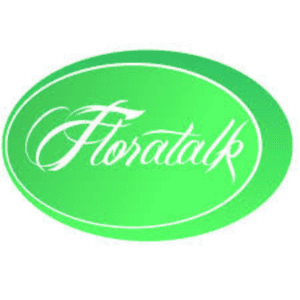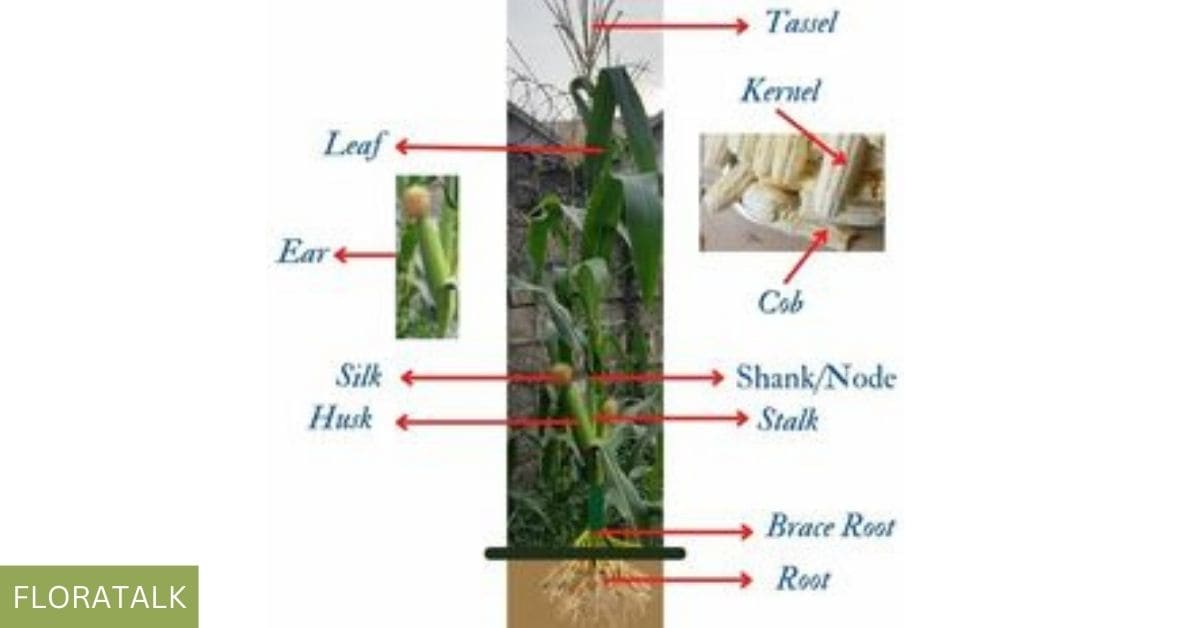The parts of a corn plant are:
Tassel
- The tassel located at the top of a matured corn (maize) plant, comes up full after all the leaves are grown.
- A tassel is the male part of a corn plant.
- It contains lots of male flowers that release pollen grains,
- Inside the pollen grains is the male reproductive (sex) cell of a corn plant found.
- Tassels attract insects like bees.
Leaves
- Leaves are part of a corn (maize) plant like every other plant
- A healthy corn leaf is green in colour and located along the stalk
- There are several leaves on the plant, it ranges from 16 to 20 leaves in a plant.
- Photosynthesis takes place through the leaves
- The leaves wrap around the stalk (stem)
- Corn leaves are long and have a conical blade like shape, it starts growing upwards then curves downward.
- Animals feed on the leaves.
Stalk (Stem)
- This is the main body of the plant,
- It’s the part of the corn plant that grows vertically upward from the ground on which the leaf and the ear grow.
- It is also known as the stem of the corn plant
- Corn stalk known to be sturdy, providing support for both the leaves and corn ear
- Nutrient and water is being carried from the ground to the roots then through the stalk to the other parts of the plant and back again to the ground.
- Stalk (stem) can grow as high as 7ft (cm) -10ft (cm)
- Some corn plants have secondary stalks known as Tillers, which grow outward near the base of the main stalk (stem).
- Livestock feed on it
Ear
- Corn ear grows on the stalk
- It is the female part of a corn plant
- Ears contain the eggs that have been fertilized by the pollen grains from the tassel.
- There are occasions where more than one ear grows out but the one at the top of the stalk becomes the biggest.
- The corn ear consists of the cob, kernel, silk, husk and shrank.
Cob
- The cob is a cylindrical, semi hard substance located at the center of the ear.
- Kernels grow on the cob.
- Maize cob is only visible after removing the kernels.
- The eggs are in an immature corn plant located on the cob, before they fertilize and develop into kernels.
Kernel
- Known as the seed of the corn plant, through the seed new corn plants spring up.
- The location of a kernel is on the cob of the corn ear.
- Kernel grows on the cob in rows.
- When fertilization occurs a kernel is produced.
- An average of 800 kernels grows in one ear of corn.
- The kernel is the part we humans eat.
- We cook kernels to eat and they are processed into other kinds of food. E.g Pap, Corn starch, Corn flour.
Silk
- It is a long hair / soft thread structure located at the top of an ear which grows outside the husk.
- This is the female flower of the corn plant also known as filaments.
- The colour may be light green, greenish yellow, creamy or brown depending on the corn variety.
- There are hundreds of silk that grow in an ear.
- The silk formed from each corn egg located in the cob and then grew outside the husk.
- Silks transport the pollen grains into the ear to fertilize the eggs inside the ear.
- When a corn is ripe the silk becomes dry and the colour changes to dark or burnt brown.
Husk
- This is the outermost part of the ear, the part you touch at first.
- It’s a group of green leaves that wrap around the whole corn ear and it’s attached to a shrank.
- It protects the entire ear.
- The husk leaf has a different texture from the leaf of the corn plant.
Shrank
- This is the place on the stem where growth occurs, leaves, roots, ears and tassels form from it.
- Leaves – the lower part of each leaf wrapped around the stalk known as a node.
- Roots – the lowest nodes below the ground develop into nodes and nodes formed above the ground develop into brace roots.
- Ears – they develop out of a leaf node.
- Tassels – they form from a node after all the leaves have developed.
Brace roots
- Located above the ground, and known as nodal roots formed above the ground.
- They can penetrate into the ground and provide water and nutrients for the corn plant.
Roots
- Like every other plant corn plant has roots, one distinct thing about the corn plant is that it has two (2) kinds of roots
- First the regular roots then the nodal roots.
The regular roots
- are roots formed from the seed, these are the first roots that come from the seed and the first root the plant has after planting corn, they are usually beneath the soil.
- Their function is to take up water and nutrients from the soil to the plant and also hold the plant to the ground.
- This root is important for the growth of the seedlings as the plant depends on the nutrients from the seed to survive.
- As soon as the nodal root forms the regular root stops growing.
Nodal roots
- Formed from nodes on the primary stalk (stem) below the ground but above the regular roots underneath the ground.
- They have the same function as the regular roots: they supply water and nutrients from the soil to the plant which travels through the stalk to the other parts of the plant.
- And also hold the plant firm to the ground.
How Reproduction takes place in the part of a corn plant
- The parts of the corn plant responsible for reproduction are the tassel (male part) and ear (female part).
- The tassel contains lots of male flowers which release pollen grains that contain the male sex cells.
- On the other hand the corn ear contains the eggs located on the cob, it is from the eggs that the silk comes from.
- Pollen is carried from the tassel to the exposed silks on the corn ear by insects or wind.
- The male reproductive cells go down into the ear and unite with the eggs causing fertilization to occur. This process is pollination.
- The fertilized egg develops into kernels (seeds).
Recent Posts
Banana (Musa acuminata) is a common fruit in Nigeria, It's one of the fruits I'm sure you’ll love to grow in your garden And also very profitable when grown in commercial...
Pawpaw (Carica papaya) from the caricaceae family is a tropical plant and a very popular fruit in Nigeria. Its loved for its sweet taste and the nutritional benefits Pawpaw is one plant...

